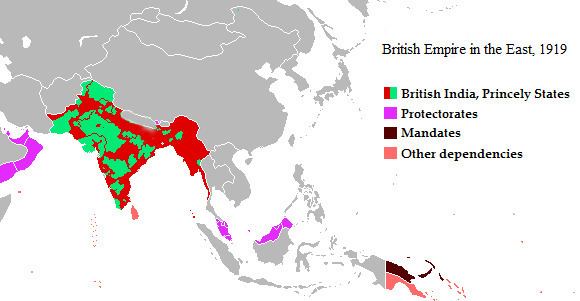 | ||
The Instrument of Accession was a legal document first introduced by the Government of India Act 1935 and used in 1947 to enable each of the rulers of the princely states under British paramountcy to join one of the new dominions of India or Pakistan created by the Partition of British India.
Contents
Background
565 princely states existed in India during the period of British rule. These were not parts of British India proper, having never become possessions of the British Crown, but were tied to it in a system of subsidiary alliances.
The Government of India Act 1935 introduced the concept of the Instrument of Accession, wherein a ruler of a princely state could accede his kingdom into the 'Federation of India'. The federation concept was initially opposed by the Indian princes, but accession of all the princely states was almost complete when World War II occurred.
In 1947 the British finalized their plans for quitting India, and the question of the future of the princely states was a conundrum for them. As they were not British, they could not be partitioned by the British between the new sovereign nations of India and Pakistan. The Indian Independence Act 1947 provided that the suzerainty of the British Crown over the princely states would simply be terminated, effective 15 August 1947. That would leave the princely states completely independent, even though many of them had been dependent on the Government of India for defence, finance, and other infrastructure. With independence, it would then be a matter for each ruler of a state to decide whether to accede to India, to accede to Pakistan, or to remain independent.
Accession of states to the new Dominions
The Instrument of Accession was the legal document designed to bring about accession, where it was decided upon. It was executed by the Government of India on the one hand and by the rulers of each of the princely states, individually, on the other hand.
Among the more momentous of such accessions was that executed by Maharaja Hari Singh, ruler of the State of Jammu and Kashmir, on 26 October 1947. It gave control of Jammu and Kashmir to the government of India. The accession of Jammu and Kashmir was accepted by Lord Mountbatten of Burma, Governor-General of India, on 27 October 1947. The text (excluding the schedule mentioned in its third point) is as follows:
